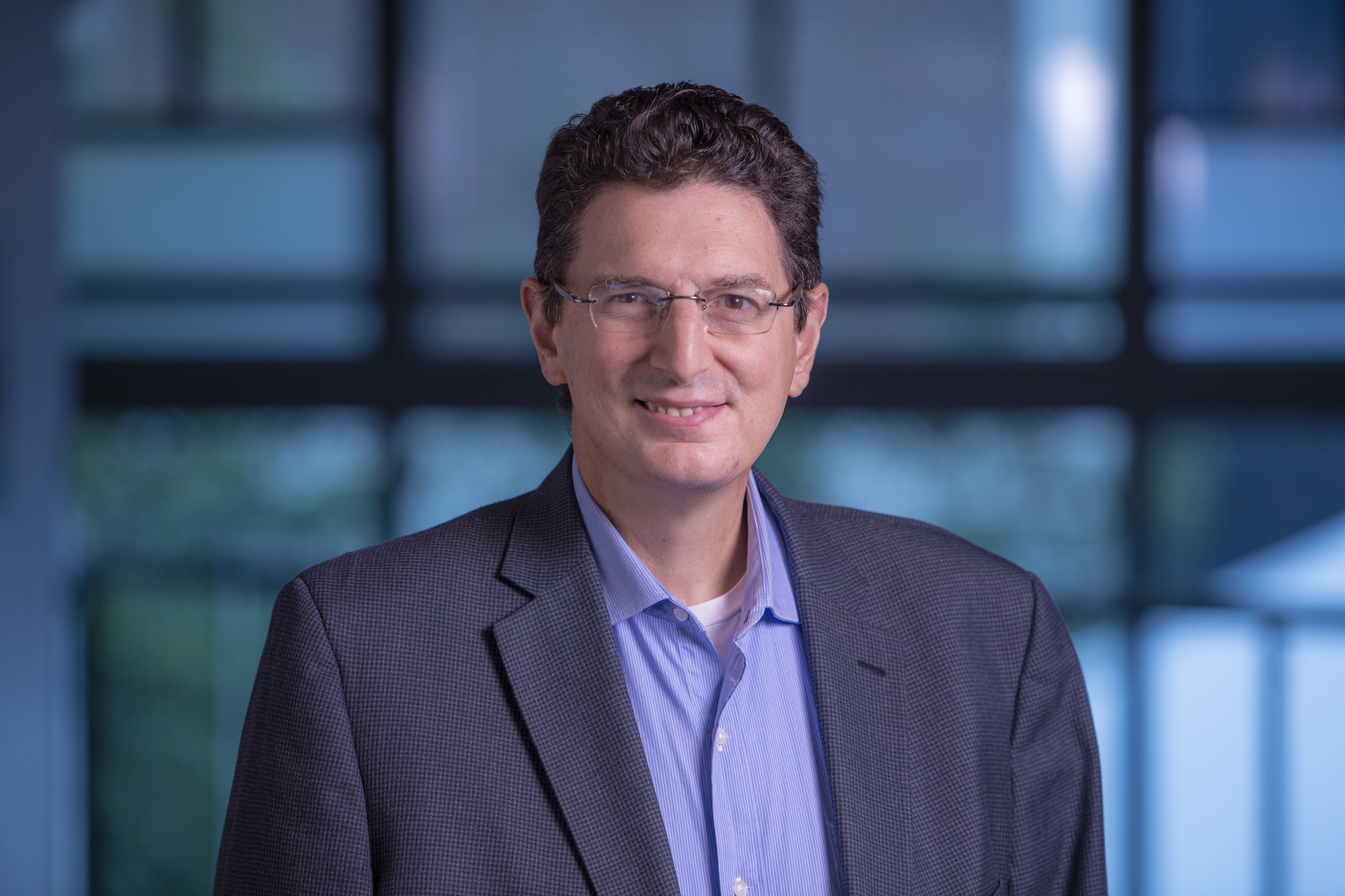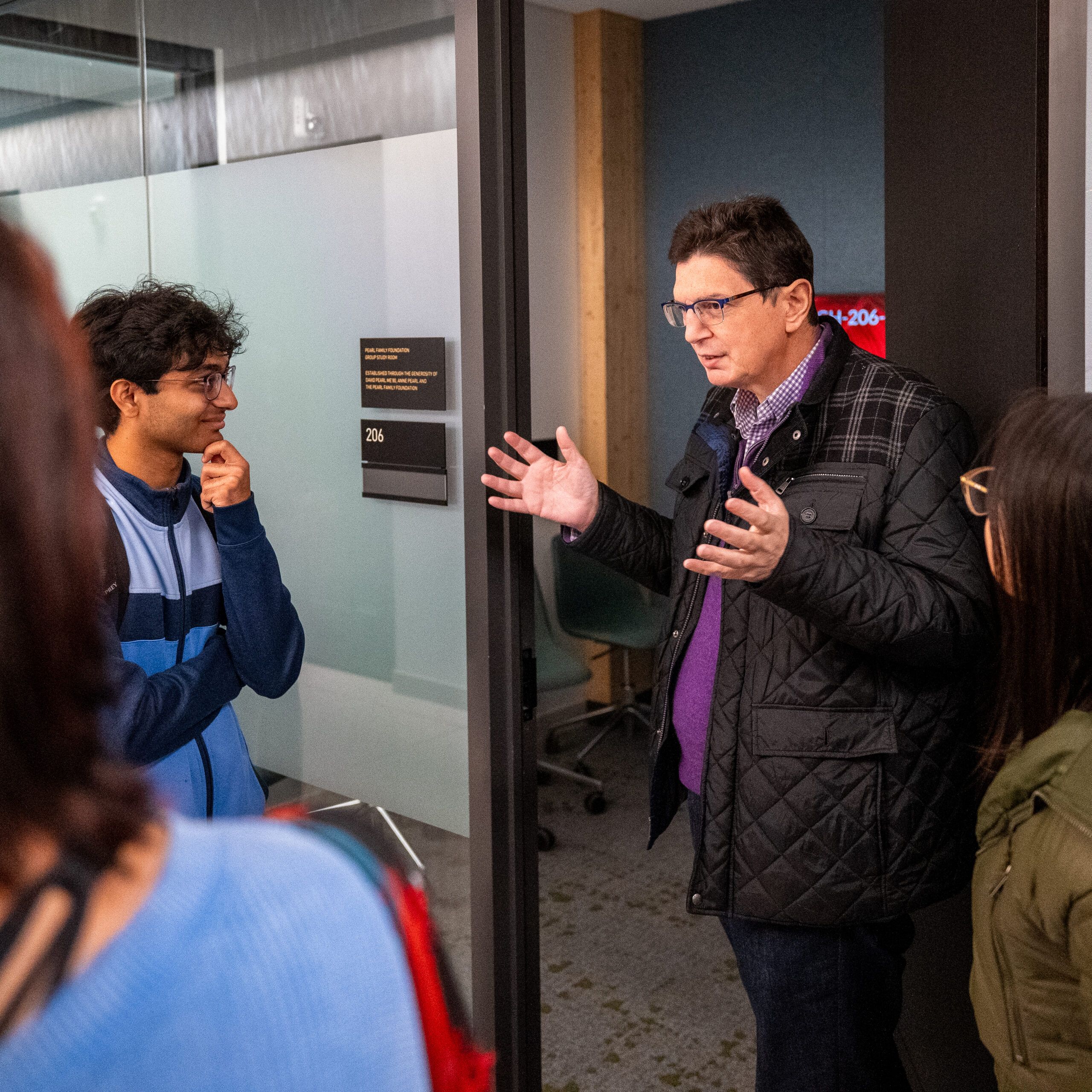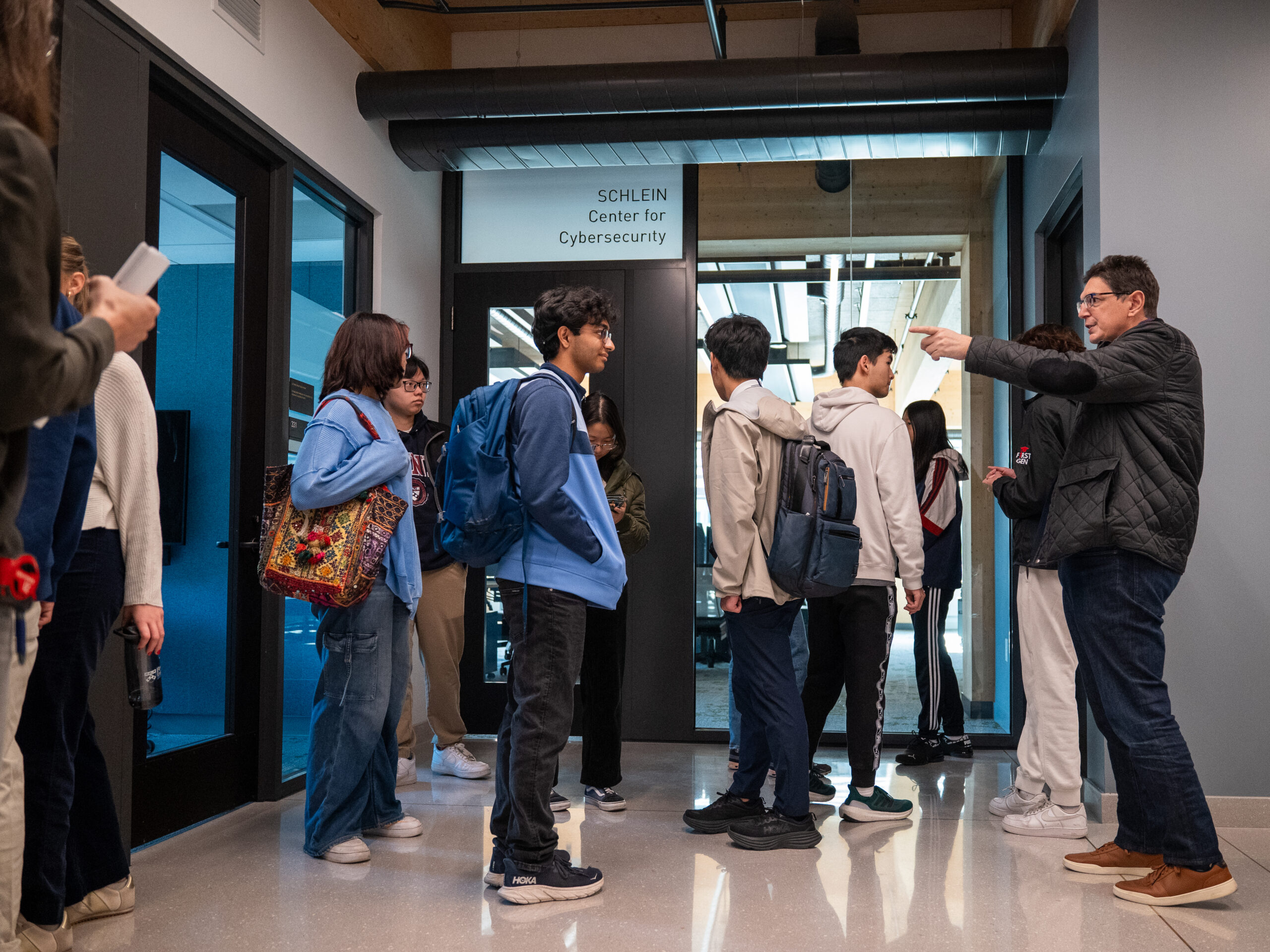
Every year, the Institute of Electrical and Electronics Engineers (IEEE) recognizes an individual for the “inspirational mentoring” of graduate students. This year, the Leon K. Kirchmayer Graduate Teaching Award was presented to George Pappas, UPS Foundation Professor of Transportation in Electrical and Systems Engineering, who serves as both Penn Engineering’s Associate Dean for Research and Innovation and Director of the Raj and Neera Singh B.S.E. Program in Artificial Intelligence.
Pappas, who has taught at Penn Engineering for more than two decades, spoke with Penn Engineering Today about his approach to teaching, and how he strives to support the students who are tackling some of the most pressing research problems in fields like robotics and AI.
This award recognizes “inspirational mentoring of graduate students.” What has guided your approach to graduate mentorship over the years?
A major influence on my mentoring style was my doctoral advisor at UC Berkeley, Professor Shankar Sastry. His approach stood out for its focus on two key ingredients: a strong scientific vision and exceptional students. I’ve sought to emulate this model at Penn for the past two decades. I refer to it as student-centric mentoring rather than project-based mentoring, as described in my essay Mentor the Researcher, Not the Research.
You’ve worked across control systems, robotics and cyber-physical systems. How do you encourage students to bridge disciplines, especially in fields that are evolving so rapidly?

This is a very real challenge. While interdisciplinarity is widely celebrated in principle, the academic merit structure — covering promotion, hiring, publishing and awards — remains largely disciplinary.
To support students and postdocs navigating this landscape, I focus not only on tailored mentoring but also on helping create new research communities at the intersection of fields.
These interdisciplinary communities provide much-needed intellectual homes where junior researchers can thrive, gain recognition and build careers that don’t fit neatly within traditional boundaries.
Many of your students have gone on to impactful careers. What do you think makes a graduate education at Penn Engineering especially formative for them?
Penn Engineering’s small student-to-faculty ratio means that every student truly matters. This creates an environment where close, individualized mentoring can flourish.
Our relationships with students and postdocs often go well beyond scientific advising — they include professional development, career guidance and continued mentorship long after graduation. This personal, sustained support is a defining aspect of the graduate experience at Penn Engineering and plays a key role in shaping our students’ long-term success.
The award also recognizes your role in “creating interdisciplinary communities.” What are some examples of these communities, and why do they matter in engineering education?
Over the years, my work has helped bridge the gap between physical systems — such as robots, self-driving cars and aircraft autopilots — and computational systems, including software and artificial intelligence. These are not only distinct disciplines, but they often reside in entirely different departments.

One example of building interdisciplinary connections is the creation of the cyber-physical systems community, which integrates computer science with physical system modeling and control. More recently, I have been involved in shaping the Learning and Control community, which brings together modern AI methods with traditional control theory.
In May 2025, we launched a new initiative focused on neuro-symbolic systems, aiming to unify machine learning approaches with symbolic reasoning and software systems. These interdisciplinary communities prepare students to think and work across boundaries.
How do you balance pushing students to tackle hard problems with creating a supportive and inclusive research environment?
As I noted in my mentoring essay (Mentor the Researcher, Not the Research), I believe that a vibrant intellectual and interdisciplinary environment creates valuable mentoring opportunities — not just between faculty and students, but also among students, postdocs, faculty and visitors. At Penn Engineering, the GRASP Lab has provided such a nurturing and collaborative home for my students.
With respect to inclusivity, it’s essential to recognize that students bring a variety of backgrounds, perspectives and experiences to campus. As a mentor, this means aligning research directions with their individual interests and aspirations, ensuring that each student can thrive both intellectually and personally.
AI and robotics are advancing at a breakneck pace. In what ways has this changed how and what you teach graduate students today compared to a decade ago?
Ten years ago, a curriculum in robotics focused more on how to achieve basic functionality, such as going from here to there in a very structured environment like a warehouse. The explosion of data-driven methods, especially deep learning, has enabled robots to go out in the real world, resulting in self-driving vehicles, autonomous aerial robots, and so on. Today, students must be equally fluent in classical tools in robotics as well as modern AI approaches.
Perhaps more importantly, the way we teach has changed. The goal is not only to teach tools, but also to prepare students to lead in fields that are still being defined. Courses are more project-driven, often interdisciplinary and connected to open research questions. This is the philosophy of our new undergraduate degree in artificial intelligence.
Looking ahead, what emerging areas in robotics or AI do you think graduate students should be paying close attention to and why?
Looking ahead, I believe the convergence of AI and robotics — often referred to as Embodied AI or Physical AI — will be transformative for our society. This integration will enable robots to become significantly more capable and support more seamless human-robot collaboration.
However, as AI systems increasingly interact with the physical world, issues of safety and responsible deployment become critical. Ensuring that these systems operate reliably and safely in real-world settings is a key research priority for my group.
